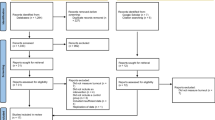Abstract
The high risk of fire dieath and injury among elderly people is well documented. To be effective, fire safety education must reach older adults in the settings in which they reside: nursing homes and other long-term care institutions, board and care homes, and independent living facilities including the person's own home. Training must also be targeted at the people who are responsible for fire safety. In the case of the nursing home or board and care home, the responsible people are the staff and owners. In the case of the majority of older adults who live independently in their homes, it is either the individual or family members. These programs must also be comprehensive.
A fire safety education curriculum was developed by a group of experts in a variety of related fields including fire safety, gerontology, health care industry, developmental disabilities, research, and instructional design. Older adults were included in each planning session. Based on that curriculum, workshops and workshop materials were developed for each of the three target populations: staff of health care facilities, staff and owners of board and care homes, and elderly people living independently in their homes. Materials included both print and audiovisuals. A pilot test of each workshop was conducted to test the short-term effects of the programs.
Results indicated significant gains in knowledge for all groups and a significant improvement in positive attitudes toward fire safety for most participants. Measures of effects of the programs on intentions to change fire safety practices indicated a potential for change. Results also showed that the measured traits, knowledge of fire safety and attitudes toward fire safety, were relatively stable.
Similar content being viewed by others
Reference List
Ansello, Edward F. (1988). The intersecting of aging and disabilities.Educational Gerontology, 14 (5).
Blye, Phillip & Yess, James P. (1985). Firesafety in board and care homes: A self-study guide for owners and operators Quincy, MA: National Fire Protection Association.
Blye, Phillip & Yess, James P. (1987). Firesafety in elderly housing.Fire Journal, 28–30; 75–76.
Crews, John. No one left to push: The public policy of aging and blindness.Educational Gerontology, 14(5).
Emery, Erin. (1991, March 5) Dry wood fuels inferno: Nine killed in city's deadliest fire.Colorado Springs Gazette Telegraph, pp. A1–A3.
Fahy, Rita F. & Norton, Alison L. (1989). How being poor affects fire risk.Fire Journal 83(1), 28–38.
Feldman, Dan & Gagnon, Jim. (1986). StatView 512+. Calabasas, CA: Brainpower, Inc.
Fire in the United States: 1983–1987 and Highlights for 1988 7th edition. (1990). United States Fire Administration and the Federal Emergency Management Agency.
Flack, Ray. (1991, March 6). Tougher rules to be sought for care homes. Colorado Springs Gazette Telegraph, p. A3.
Groner, Norman E. (1986). Fire safety in board and care homes. Rockville, MD: Project Share.
Hall, John R., Jr. (1986). A brief look at fire experience in health care facilities.Fire Journal, 80(2), 51–53.
Hall, John R., Jr. (1989). Fire in America: Updating the picture.Fire News, 769, 1, 4.
Hall, John R., Jr. (1989). The latest statistics on US home smoke detectors.Fire Journal, 83(1), 39–41.
Hall, John R., Jr. (1990). The elderly, the sick, and health care facilities.Fire Journal, 84(4), 32.
Hall, John R., Jr. (1992). The U.S. fire problem overview report through 1990: Leading causes and other patterns and trends. Quincy, MA: National Fire Protection Association.
Harmon, Carolyn. (1982). Board and care: An old problem, a new resource for long term care. Washington, DC: Center for the Study of Social Policy.
High occupancy rate may trigger industry growth. (1991).Contemporary Long Term Care, 14(2).
Karter, Michael J., Jr. & Miller, Alison L. (1991). Patterns of fire casualties in home fires by age and sex, 1984–88: Quincy, MA: National Fire Protection Association.
Nelson, Harold E, et al. (1983). A fire safety evaluation system for board and care operators: Final report. National Bureau of Standards.
Pearson, R. G. & Joost, M. G. (1983). Egress behavior response times of handicapped and elderly subjects to stimulated residential fire situations. Washington, DC: U.S. Department of Commerce and Department of Health and Human Services.
Randall, Gall & Emery, Erin. (1991, March 6). Blaze spurs call for review of fire code. Colorado Springs Gazette Telegraph, pp. A1, A3.
Report by the Chairman of the Subcommittee on Health and Long-Term Care of the Select Committee on Aging, House of Representatives. (1989). Board and care homes in America: A national tragedy. Commerce Publication Number 101-711.
Rose, Thomas & Ansello, Edward F. (1987). Aging and developmental disabilities: Research and planning: A final report to the Maryland State Planning Council on Developmental Disabilities.
Rutman, Irvin D., Baron, Richard C., & Tatem, Ann S. (1987). Training board and care providers: Regulatory requirements, state programs, training approaches & model curricula. Rockville, MD: Project Share.
Walker, Bonnie L. (1988). Final report: A fire safety certification system for board and care operators and staff. Prepared for the Administration on Developmental Disabilities pursuant to a Phase ISBIR.
Walker, Bonnie L. (1989). Final report: A fire safety certification system for board and care operators and staff. Prepared for the Administration on Developmental Disabilities pursuant to a Phase II SBIR.
Walker, Bonnie L. (1990).Fire Safety Workshop for Board and Care Operators: Participant's Coursebook. Bowie, MD: Bonnie Walker & Associates.
Walker, Bonnie L. (1991).Fire Safety in Nursing Facilities: Participant's Coursebook. Bowie, MD: Bonnie Walker & Associates.
Willey, A. Elwood. (1990). Editorial: How many more must die? Another look at a continuing problem.Fire Journal, 84(4), 4.
Author information
Authors and Affiliations
Rights and permissions
About this article
Cite this article
Walker, B.L., Beck, K., Walker, A.L. et al. The short-term effects of a fire safety education program for the elderly. Fire Technol 28, 134–162 (1992). https://doi.org/10.1007/BF01857941
Issue Date:
DOI: https://doi.org/10.1007/BF01857941




